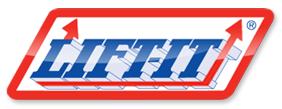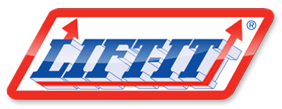Custom Lifting Slings are an opportunity that any progressive rigging products manufacturer should welcome. Unfortunately, some manufacturers take the perspective, “if it’s not in our catalog, then we can’t help you”. Aside being unimaginative this attitude does not help responsible sling users develop products or methods to handle and manipulate loads.
Lift-it Manufacturing welcomes any opportunity to provide our customers with satisfaction and solutions for unique applications. In developing custom lifting slings and custom lifting assemblies we work with the client in a partnership like arrangement. Based upon the customer’s application and valued input, our job is to fabricate a product that will meet the requirements of the application.
The customer must test and evaluate the special design sling in a set of non-consequence circumstances. One of many important goals will be to design and eliminate all known hazards and attempt to consider and mitigate unknown dangers. Ultimately it is the responsibility of the user to determine that the application of the product will not result in injury, death or property damage.
Some things you need to know when you embark upon a developmental process would be to consider the load and its characteristics, such as, but not limited to: weight, stability, dimensions, location of the center of gravity, attachment points, the need for sling protection, etc.
Other frequently asked questions that must be dealt with are:
What type of sling should be used?
What type of hitch should be employed?
How is load control going to be achieved?
Are there loose parts or components that could fall or shift?
Are there any limitations in overhead clearance and/or obstructions or hazards such as power lines?
Are there any chemical or environmental factors that need to be considered?
The above mentioned considerations cannot be considered to be a complete list as there are many other variables that need to be taken into account.
An example of the process that took place between the professionals at Lift-It Manufacturing working in conjunction with the safety professionals at Grant County PUD to develop a custom lifting sling to handle street light poles follows for your consideration.
The weight of the pole was one of the easier parts of the process, as was the selection of the specific sling type. A polyester, eye and eye web sling with half twist and tapered eyes was selected. The half twist eye was specifically chosen due to the fact that our customer wanted to handle the pole using a double wrap, choke hitch.
Double wrap, choker hitches provide for a tighter choke hitch, resulting in full 360 degree contact with the load. A full wrap is taken around the load before choking the sling. You need to know that longer sling lengths are required when using double wrap choker hitches.
Once the sling type and sling hitch were determined, it was decided that an additional “friction” pad would be desirable to facilitate additional load control. Different types of rubber and neoprene were evaluated and eventually a “texturized” pad was selected.
In looking at the friction pad material, the experts at Lift-It developed labeling to inform sling users
that they must double wrap the pole and also ensure that the choker action must be between the sling body and sling eye. The friction pad at the point of choke could damage the sling eye and the pad must be against the pole for gripping.
Beyond these considerations it was pointed out to our customer that the initial evaluation process was done on a dry day with a specific type of pole. It was important for them to also evaluate the custom design sling in wet and icy conditions with different types and shapes of poles to ensure safe and efficient handling, irrespective of the handling conditions.
It may seem like a very long and drawn out process and there was a tremendous amount of effort expended by us and our customer. When it comes to safety, we do not take short cuts and neither did the professionals at Grant County PUD.
This is but one of many examples of the custom sling design capabilities at Lift-It Manufacturing. When you require a special application sling contact us and we will match your effort. Custom designed slings are a challenge, but the process should not be challenging or painful for you, our customer or potential client. A job done is worth doing right and we do not operate on the basis of, “It should work” or “it looks good on paper”. An old fashioned concept that still makes sense; we’ll work with you as a partner and invest our time and resources with you as long as you will make the commitment to evaluate and ultimately determine the adequacy of the custom design sling assembly. Sometimes old fashioned is very nice.
View my Google+ Profile Here

















